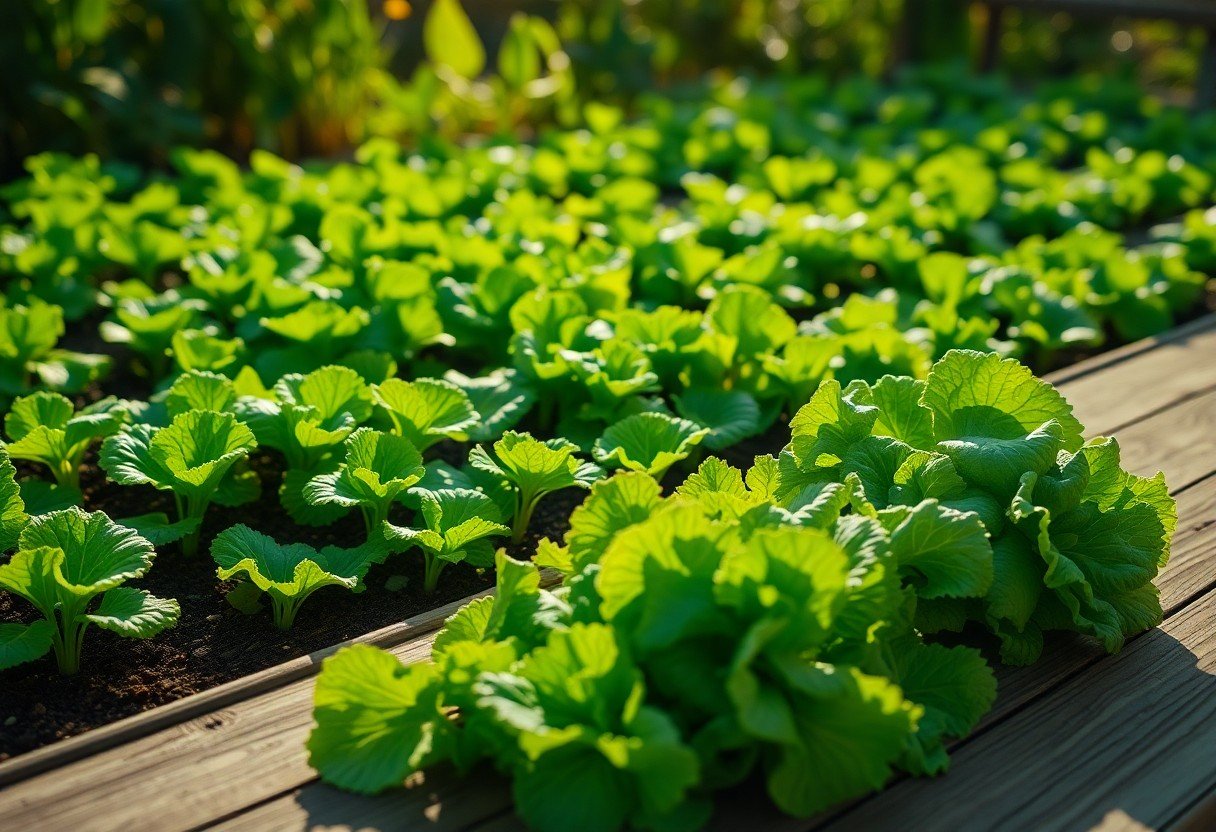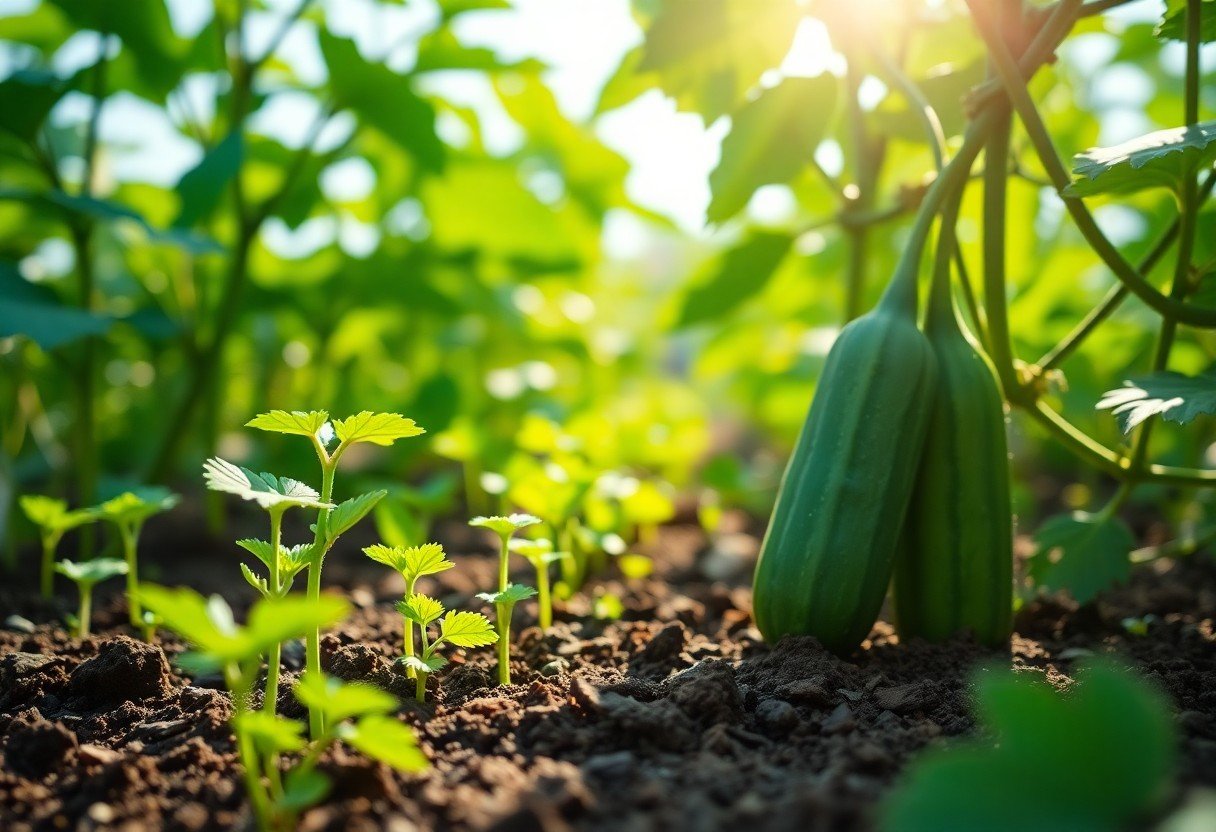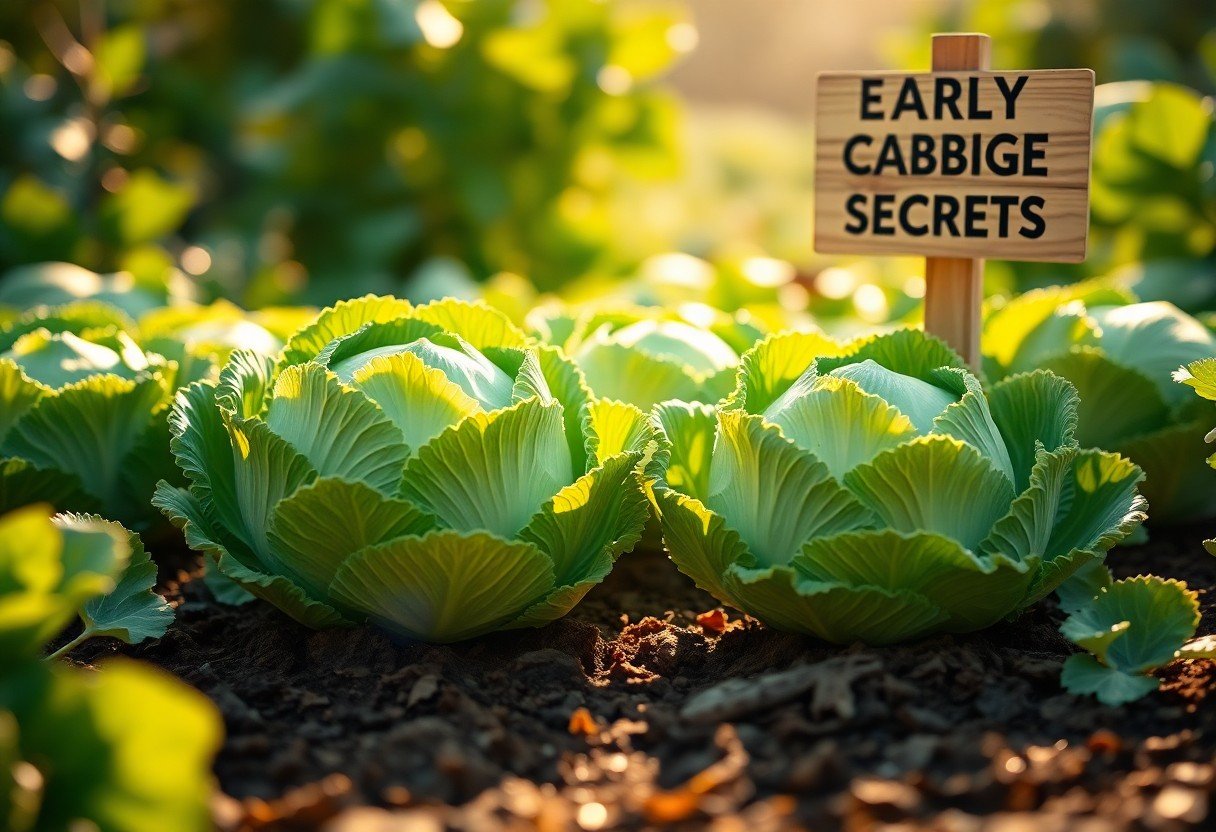You can effortlessly transform your garden with the vibrant colors of impatiens, commonly known as Busy Lizzies. This guide will take you through the entire process, from sowing seeds to enjoying their lovely blooms. By understanding the ideal conditions for growth, proper watering techniques, and successful transplanting, you’ll be well-equipped to cultivate these beautiful flowers in your own space. Let’s unlock the secrets to growing healthy and flourishing impatiens together!
Key Takeaways:
- Understand the ideal growing conditions for impatiens, including light, temperature, and moisture, to promote healthy growth from seed to flowering.
- Utilize proper sowing techniques and care routines, such as thinning seedlings and providing adequate nutrition, to ensure vigorous plants.
- Learn about pest and disease management strategies to protect your impatiens and encourage a flourishing garden throughout the blooming season.
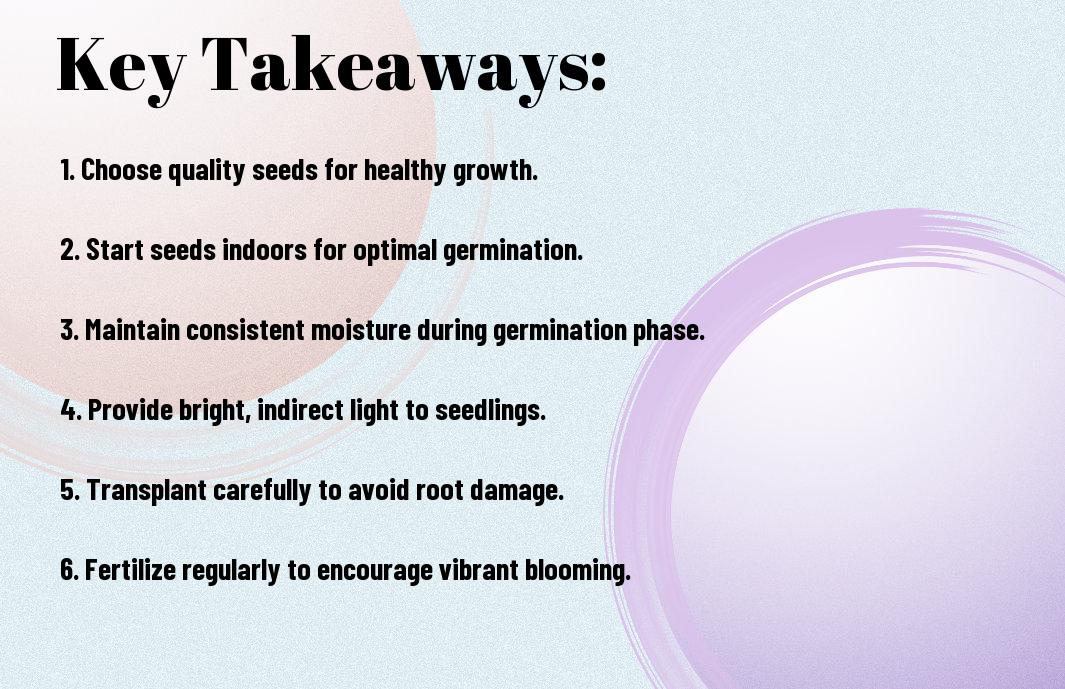
Understanding Impatiens
Your journey with Impatiens begins with a solid understanding of this beloved flowering plant. Known for their vibrant colors and lush foliage, these annuals are a staple in gardens and landscapes worldwide. They thrive in shady areas, making them perfect for filling in those difficult spots where sunlight is limited.
Botanical Overview
About the genus Impatiens, it belongs to the Balsaminaceae family, comprising over 1,000 species. Most commonly cultivated for ornamental purposes are Impatiens walleriana and Impatiens hawkeri. These plants are characterized by their fleshy stems and heart-shaped leaves, making them particularly resilient in various growing conditions.
Varieties of Impatiens
Varieties of Impatiens come in a range of colors, sizes, and blooms that can suit any aesthetic. Some popular types include the classic Busy Lizzie, SunPatiens, and New Guinea Impatiens. Each variety offers unique characteristics, such as varying heat tolerance levels, flower sizes, and growth habits.
Due to their adaptability, you will find Impatiens available in numerous colors and forms. Busy Lizzie is a well-known favorite, with its abundant, brightly colored blooms, while SunPatiens provides excellent heat and humidity tolerance. New Guinea Impatiens are perfect for more tropical settings and boast larger, showier flowers, giving you a diverse palette for your gardening needs.
Growing Regions and Climate
Overview of Impatiens highlights their preference for mild climates with moderate temperatures. They flourish in USDA hardiness zones 10-11, but due to their versatility, you can grow them in many regions with adequate care and attention.
Considering your region’s climate is important for successful growth. Impatiens thrive in environments with indirect sunlight and well-drained soil. If you live in cooler areas, you can start your plants indoors or select varieties like SunPatiens, which can tolerate hotter, sunnier conditions. Ensuring the right environment will lead to a vibrant display of blooms.
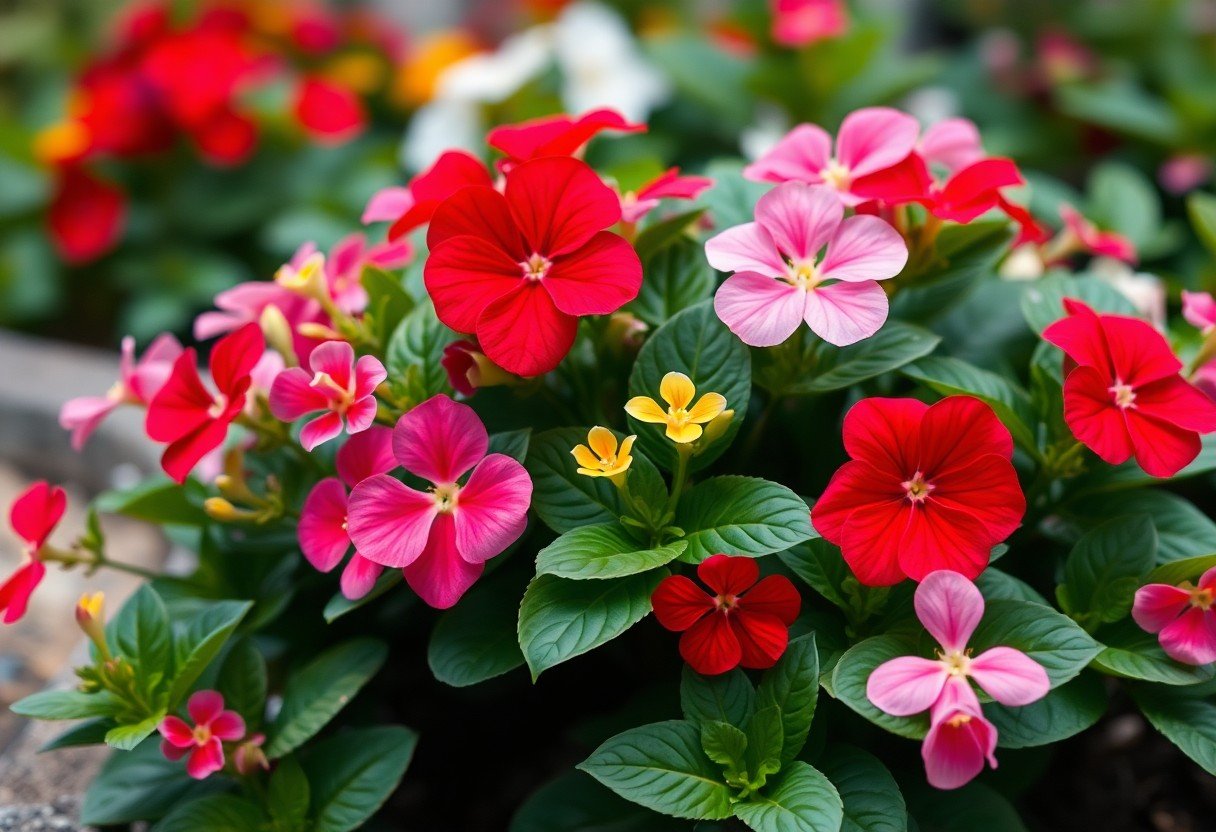
Preparing for Sowing
You’re ready to begin on your journey of growing beautiful impatiens, and the first step is getting everything prepared for sowing. This includes selecting the right soil, gathering necessary tools, and choosing the best seeds. With the right preparation, you’ll set a solid foundation for your impatiens to flourish.
Choosing the Right Soil
By selecting a well-draining soil mix that retains moisture, you’ll create an ideal environment for your impatiens to thrive. A blend specifically designed for seed starting, often featuring peat moss and vermiculite, encourages strong root development and healthy growth.
Essential Tools and Supplies
Above all, having the right tools and supplies will make the sowing process more efficient and enjoyable. Basic supplies include seed trays or pots, a watering can or spray bottle, a small trowel, and plant labels to keep track of different varieties.
Supplies like seed trays or pots, a fine mist spray bottle, and a small trowel are necessary for setting up your growing station. Don’t forget plant labels, as they’ll help you track the different varieties and sowing dates. Using quality tools will streamline the process and help you maintain a neat growing area.
Seed Selection and Sources
One of the most exciting aspects of preparing for sowing is choosing the seeds. Look for reputable sources, such as local garden centers or trusted online retailers, as they often offer a wide selection of impatiens varieties that cater to your specific gardening needs.
Preparing to select seeds involves exploring a variety of impatiens that appeal to your aesthetic and growing conditions. Look for disease-resistant varieties or those known for their vibrant colors and unique foliage. Buying from reputable suppliers ensures that you receive fresh seeds with high germination rates, setting you up for a successful growing experience.
Sowing Impatiens Seeds
Once again, you’re initiateing on the exciting journey of growing impatiens from seed to flowering beauty. Proper sowing techniques lay the foundation for healthy plants and vibrant blooms, making it imperative to understand the various aspects of this process.
Timing for Sowing
Below, you’ll find that the best time for sowing impatiens seeds is typically in late winter to early spring. This timing ensures that your seedlings are ready to be transplanted when the frost has passed, leading to robust growth throughout the blooming season.
Seed Germination Process
Around 7 to 14 days after sowing, impatiens seeds will begin to germinate under optimal conditions. The ideal temperatures for germination range from 70°F to 75°F, ensuring that your seeds can sprout effectively.
Indeed, to promote successful seed germination, you should provide a warm environment and maintain consistent moisture levels. Utilizing a seed-starting mix can enhance drainage and airflow, which are vital for preventing damping-off disease that can threaten delicate seedlings.
Best Practices for Sowing
Around the time you are ready to sow, consider using seed trays or pots filled with a quality seed-starting mix. This approach helps to create an ideal environment for the seeds to thrive and develop strong roots.
Understanding the best practices for sowing includes spacing your seeds appropriately and not burying them too deep. Impatiens seeds are tiny and require light to germinate, so a light dusting of mix over the seeds is sufficient for optimal results.
Watering Techniques
Above all, you must keep the soil evenly moist without overwatering. A fine mist is often the best approach during the germination phase to avoid displacing your seeds.
In addition, consider using a bottom watering technique by placing your trays in a shallow dish of water. This method allows the soil to absorb moisture without disturbing the seeds, contributing to healthy and vigorous growth as your impatiens begin their life cycle.

Caring for Seedlings
All seedlings require proper care to ensure they thrive as they grow. This chapter covers the imperative aspects of nurturing your young impatiens, focusing on light, temperature, humidity, fertilization, thinning, and transplanting techniques.
Providing Adequate Light
Against the backdrop of their natural habitat, Busy Lizzies flourish in bright, indirect sunlight. When growing your seedlings, placing them in a location where they can receive 12-16 hours of light daily is beneficial. Consider using fluorescent or LED grow lights if direct sunlight isn’t an option.
Temperature and Humidity Control
Across your growing environment, maintaining an ideal balance of temperature and humidity is vital. Keep the seedlings in a temperature range of 65°F to 75°F (18°C to 24°C) while ensuring humidity levels are between 50% to 70% for optimal growth.
Temperature and Humidity Guidelines
| Temperature Range | 65°F to 75°F (18°C to 24°C) |
| Humidity Levels | 50% to 70% |
Providing a stable environment for your seedlings, such as using humidity domes or misting the air around them, promotes healthy growth. Monitoring these environmental factors can lead to flourishing plants and aid in their journey to become beautiful flowers.
Fertilization for Young Plants
Among the various aspects of plant care, fertilization plays a significant role in nurturing young impatiens. Begin fertilizing your seedlings with a diluted, balanced fertilizer every two weeks once they develop their second set of true leaves.
Also, using a water-soluble fertilizer that is lower in nitrogen and higher in phosphorus and potassium encourages healthy root development and vibrant foliage. Always follow the manufacturer’s guidelines on dilution rates to avoid over-fertilization, which can harm your seedlings.
Thinning and Transplanting
Fertilization to support your seedlings can lead to overcrowding, which requires thinning to promote individual growth. Once your seedlings reach approximately 2 inches in height, evaluate their spacing and consider preemptively removing less vigorous plants.
Due to the competitive nature of water and nutrients among crowded seedlings, thinning helps ensure that each plant has adequate resources to thrive. You can also transplant seedlings into larger pots when they outgrow their initial containers, giving them the space to flourish as they reach for the light.
Transitioning to Outdoors
For successful growth of your impatiens, transitioning your seedlings outdoors requires careful planning and execution. This process ensures that your plants adapt well to their new environment, promoting healthier growth and vibrant flowers.
Hardening Off Seedlings
After your seedlings have developed a few sets of true leaves, it’s time to harden them off. Gradually expose them to outdoor conditions by placing them outside for a few hours each day, slowly extending the time spent outdoors over a week or two. This process helps your plants acclimate to sunlight, wind, and variable temperatures.
Selecting the Right Planting Site
Along with hardening off your seedlings, choosing the right planting site is vital for optimal growth. Impatiens thrive in locations that offer partial to full shade, particularly where they can escape the harsh afternoon sun. They also prefer well-drained, rich soil for best results.
Considering the layout of your garden, assess areas that receive dappled sunlight or sheltered spots that remain cooler throughout the day. Be mindful of surrounding trees or structures that may cast shade or compete for moisture. Finding the right balance of light and space will greatly enhance the growth potential of your impatiens.
Planting Techniques for Outdoor Growth
Selecting the right planting techniques significantly impacts the success of your impatiens in the outdoor environment. When planting, dig a hole that accommodates the root system of your seedlings, ensuring that the top of the root ball sits level with the surrounding soil for proper drainage and growth.
Right after you’ve prepared your planting area, gently remove the seedlings from their containers, taking care not to damage the roots. Space your plants about 10 to 12 inches apart to allow for ample airflow and growth, and water them thoroughly after planting to help settle the soil around their roots. Following these planting techniques will help your impatiens flourish in their new outdoor home.
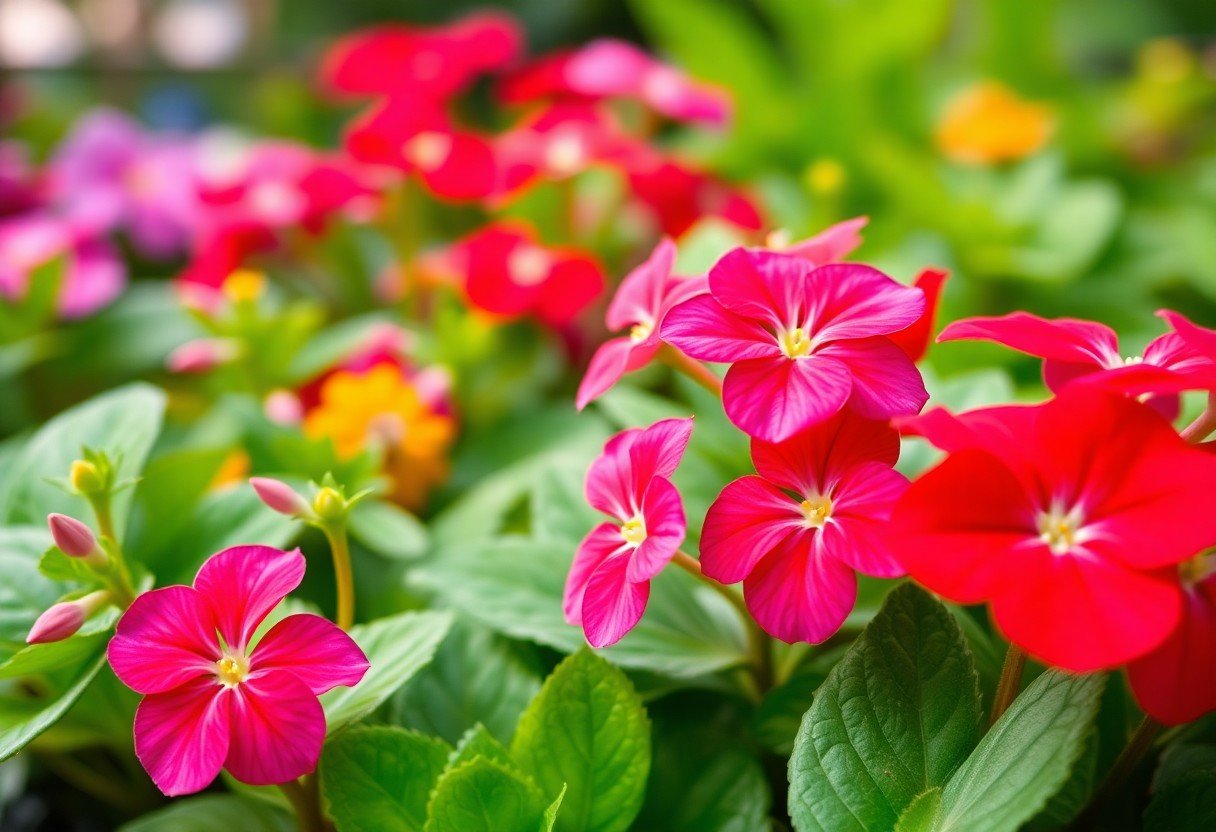
Maintenance and Care
Unlike many other plants, busy Lizzies, or impatiens, require specific maintenance to thrive. Providing the right care through watering, pest management, pruning, and seasonal feeding will ensure vibrant blooms throughout their growing season.
Watering Schedules
Maintenance is key when it comes to watering your impatiens. Aim to keep the soil consistently moist but not waterlogged. Water your plants early in the morning or late in the afternoon to reduce evaporation. Check the top inch of soil; if it feels dry, it’s time for another drink. Make sure to adjust your watering schedule based on weather conditions to keep your busy Lizzies happy.
Pest and Disease Management
Around your busy Lizzies, you might encounter pests such as aphids or spider mites. Monitoring your plants regularly will allow you to catch any issues early on. Keep an eye out for unusual wilting, discoloration, or sticky residue. If you spot any pests, you can treat them with insecticidal soap or neem oil to keep your impatiens healthy.
Another important aspect of pest and disease management is ensuring good air circulation and avoiding overcrowding your plants. Proper spacing not only helps reduce pest infestations but also minimizes the risk of fungal diseases. Regularly inspect your plants for signs of stress and address any issues promptly to maintain their vitality.
Pruning and Deadheading
An effective way to encourage more blooms in your impatiens is through regular pruning and deadheading. Trim away any spent flowers and leaves to promote new growth and maintain the plant’s appearance. This practice also prevents disease spread and allows nutrients to focus on producing healthy foliage and blooms.
To successfully prune your busy Lizzies, start by using clean, sharp scissors or shears to remove faded blooms and any yellowing leaves. This not only enhances their aesthetic but also encourages the plants to channel their energy into producing more flowers, resulting in a vivid display throughout the season.
Seasonal Care and Feeding
After your busy Lizzies have established themselves, consider supplementing their growth with balanced fertilizers every four to six weeks. This will provide vital nutrients and support lush foliage and abundant blooms. Be sure to follow the recommended feeding guidelines to avoid over-fertilizing, which can lead to lush leaves with fewer flowers.
Seasonal care also includes adjusting your watering and sunlight exposure as temperatures change. During hotter months, you may need to check moisture levels more frequently while ensuring your impatiens are protected from intense midday sun to prevent leaf scorch. This thoughtful attention to care will keep your plants thriving from sowing to flowering.
Harvesting and Enjoying Blooms
Now that your impatiens have matured and are ready to flower, it’s time to enjoy the vibrant blooms you’ve nurtured. Observing their transformation from tiny seeds to colorful flowers is immensely satisfying, and with a little care, you can prolong their blooming period.
Anticipating Flowering
For many gardeners, the anticipation of flowering is one of the most rewarding parts of growing impatiens. As your plants reach maturity, watch for the buds to form, and get ready to enjoy your thoughtful cultivation. Keep an eye on weather conditions that may influence blooming.
Tips for Continuous Blooming
To ensure your impatiens provide a steady display of color throughout the growing season, consider implementing these practices:
- Deadhead spent flowers regularly to encourage new blooms.
- Provide consistent moisture, as impatiens prefer evenly moist soil.
- Fertilize every 4-6 weeks with a balanced, water-soluble fertilizer.
- Place your plants in a location with partial shade to shield them from midday sun.
- After a few weeks of blooming, prune back any leggy growth to promote fuller plants.
In order to maintain continuous blooming, it’s beneficial to monitor your plants and adjust care practices as the season progresses. This way, you can keep your impatiens thriving longer and vibrant:
- Rotate your plants if they start leaning towards light sources.
- Check for pests regularly to ensure their health.
- Incorporate companion plants that may enhance their growing conditions.
- After addressing any issues, be patient as your blooms will return with vigor.
Arranging and Displaying Impatiens
Anticipating the beauty of your impatiens can be furthered by arranging and displaying them in your garden or home. Choose containers that complement the color of the blooms and provide adequate drainage to keep your plants healthy.
For instance, mix different varieties of impatiens with complementary flowers and foliage to create stunning visual interest. Consider using hanging baskets or window boxes to showcase their lush growth. Position them where you can easily admire their beauty, and feel free to experiment with color combinations for a striking impact.
Conclusion
Following this comprehensive guide on “Busy Lizzie’s Secrets – Growing Impatiens from Sowing to Flowering,” you now have the imperative knowledge to cultivate vibrant impatiens in your garden. By understanding the best sowing techniques, ideal growing conditions, and proper care strategies, you can successfully enjoy the lush blooms that impatiens offer. With patience and attention, your efforts will yield a stunning display of color, enhancing your outdoor space beautifully.
FAQ
Q: What is the best time to start sowing Impatiens for optimal growth?
A: The ideal time to start sowing Impatiens is in early spring. This timing allows the seedlings to establish before the warm weather of summer sets in. When starting indoors, aim to sow the seeds about 10-12 weeks before the last expected frost in your area. If you plan to sow directly outdoors, ensure the risk of frost has passed and the soil temperature is consistently above 65°F (18°C) for the best germination rates.
Q: How should I care for my Impatiens seedlings after they have sprouted?
A: After your Impatiens seedlings have sprouted, it is important to provide them with proper care to ensure healthy growth. Begin by placing them in a bright, indirect light location to avoid burning the delicate leaves. Keep the soil consistently moist but not waterlogged. A humidity dome can be beneficial during the early stages to maintain moisture. As the seedlings develop, gradually acclimatize them to outdoor conditions by hardening them off, which means exposing them to outdoor conditions for a few hours each day over a week before transplanting.
Q: What are the signs that my Impatiens are ready for transplanting?
A: Your Impatiens are ready for transplanting when they reach a height of about 3-4 inches (7-10 cm) and have developed several sets of true leaves. Additionally, ensure they are sturdy enough to withstand wind and handling. Before transplanting, check to see if the roots are starting to fill the seedling tray or container. If the roots have begun to circle the bottom, it’s an indication that they need to be moved to a larger space. Be sure to transplant after the last frost date for your region to encourage healthy growth.


